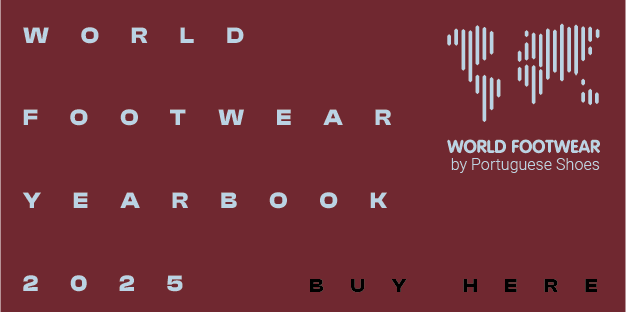New Zealand imports increase in 2013 supported by the country’s economic growth

New Zealand imports grew 2.5 % in volume and 2.1% in value and now reach 24 million pairs worthing 269 million USD
Last year, footwear imports in New Zealand continued to increase and main suppliers were China (66%), Vietnam (10%), Indonesia (5%) and Italy (5%); remainder countries had a meaningless share. Despite the increase in imports (quantities and value), the average price registered a slight decrease of 0.4% and now reaches 10.99 USD.
This growth in imports was supported by the country’s real GDP growth. According to the World Economic Outlook published this month by the International Monetary Fund, in 2013 New Zealand’s GDP had an annual growth of 2.4%, which compares to 1.3% growth for the group of advanced economies, 2.4% for neighbour Australia, and 1.9% for the US.
When analysing it by type of commodity, rubber and plastic and leather footwear registered decreases in the quantities bought abroad. Imports of rubber and plastic footwear lost value as well. Waterproof footwear had a small increment on the quantities imported (2.9%) but a decrease of 16.1% in their value, which resulted in deterioration of the average price.
The New Zealand Footwear Industry Association collects their figures for the 12 months’ period ending 30th July each year. For the period ending 30th July 2013, the secretary of the association, Mr Duncan J S Ingram, says imports from China amounted to 67% by value and 84% by volume. The dominance of China is partly historical as many importers first sourced from that Asian country and have continued to do so. A position reinforced by the Free Trade Agreement between New Zealand and China, which has resulted in lower tariffs on Chinese imports. The Association is expecting the tariff for Chinese footwear to reduce to zero by 2016.
Such tendency could reinforce the concentration of imports. However, there are other elements to bear in mind. “Any move to diversify the source of the product imported is initiated by a need to underpin the safety and security of product supply. It is considered that wage rates in China will increase at an increasing rate, and increased competition for skilled staff will have an adverse effect on delivery times, particularly for small orders; and in general orders from New Zealand are small in world standards”, explained Mr Ingram.
In 2013 the value of New Zealand footwear exports declined 6.3% reaching 28.1 million USD; quantities exported also registered a deterioration (-13.5%) with this country from the Pacific region selling 1.08 million pairs abroad. The main destinations are Australia (77%) and the US (10%); all other trade partners had an individual share of 2% or less. More than half of the countries from the top 20 buyers posted less orders in 2013, which resulted in a significant decline in the value of sales abroad.
Mr Duncan Ingram confirmed that total exports include a significant share of re-exported products, and according to their most updated official figures, approximately 12% of total exports are of New Zealand origin and about 88% re-exports by volume. According to Mr Ingram, this compares with approximately 20% of New Zealand origin in the previous period, ending July 2012.
If we look into the product mix, the most significant type of commodity for New Zealand exports is leather footwear which suffered in 2013 a significant decrease in volume (-29.8%) and value (-26.5%), but an increase of average price. Other materials footwear, the second largest exporting category, registered a 48.1% growth in volume and 57.0% in value.
The average price of total exported footwear registered an 8.2% growth and reaches now 26.01 USD. When questioned about the variation in the fob value per pair, Mr Duncan Ingram said it is largely due to the mix of types of footwear rather than costs of production. In fact, the fob value per pair was down only 0.4% for exports of New Zealand produced footwear, and increased by 3.1% between 2012 and 2013 for re-exports.
A final note to underline that although premium European suppliers still have small market shares (below 4%), last year they registered solid two digits growth rates: Italy (13.6%), Spain (37.6%) and Portugal (17.6%)
This growth in imports was supported by the country’s real GDP growth. According to the World Economic Outlook published this month by the International Monetary Fund, in 2013 New Zealand’s GDP had an annual growth of 2.4%, which compares to 1.3% growth for the group of advanced economies, 2.4% for neighbour Australia, and 1.9% for the US.
When analysing it by type of commodity, rubber and plastic and leather footwear registered decreases in the quantities bought abroad. Imports of rubber and plastic footwear lost value as well. Waterproof footwear had a small increment on the quantities imported (2.9%) but a decrease of 16.1% in their value, which resulted in deterioration of the average price.
The New Zealand Footwear Industry Association collects their figures for the 12 months’ period ending 30th July each year. For the period ending 30th July 2013, the secretary of the association, Mr Duncan J S Ingram, says imports from China amounted to 67% by value and 84% by volume. The dominance of China is partly historical as many importers first sourced from that Asian country and have continued to do so. A position reinforced by the Free Trade Agreement between New Zealand and China, which has resulted in lower tariffs on Chinese imports. The Association is expecting the tariff for Chinese footwear to reduce to zero by 2016.
Such tendency could reinforce the concentration of imports. However, there are other elements to bear in mind. “Any move to diversify the source of the product imported is initiated by a need to underpin the safety and security of product supply. It is considered that wage rates in China will increase at an increasing rate, and increased competition for skilled staff will have an adverse effect on delivery times, particularly for small orders; and in general orders from New Zealand are small in world standards”, explained Mr Ingram.
In 2013 the value of New Zealand footwear exports declined 6.3% reaching 28.1 million USD; quantities exported also registered a deterioration (-13.5%) with this country from the Pacific region selling 1.08 million pairs abroad. The main destinations are Australia (77%) and the US (10%); all other trade partners had an individual share of 2% or less. More than half of the countries from the top 20 buyers posted less orders in 2013, which resulted in a significant decline in the value of sales abroad.
Mr Duncan Ingram confirmed that total exports include a significant share of re-exported products, and according to their most updated official figures, approximately 12% of total exports are of New Zealand origin and about 88% re-exports by volume. According to Mr Ingram, this compares with approximately 20% of New Zealand origin in the previous period, ending July 2012.
If we look into the product mix, the most significant type of commodity for New Zealand exports is leather footwear which suffered in 2013 a significant decrease in volume (-29.8%) and value (-26.5%), but an increase of average price. Other materials footwear, the second largest exporting category, registered a 48.1% growth in volume and 57.0% in value.
The average price of total exported footwear registered an 8.2% growth and reaches now 26.01 USD. When questioned about the variation in the fob value per pair, Mr Duncan Ingram said it is largely due to the mix of types of footwear rather than costs of production. In fact, the fob value per pair was down only 0.4% for exports of New Zealand produced footwear, and increased by 3.1% between 2012 and 2013 for re-exports.
A final note to underline that although premium European suppliers still have small market shares (below 4%), last year they registered solid two digits growth rates: Italy (13.6%), Spain (37.6%) and Portugal (17.6%)














